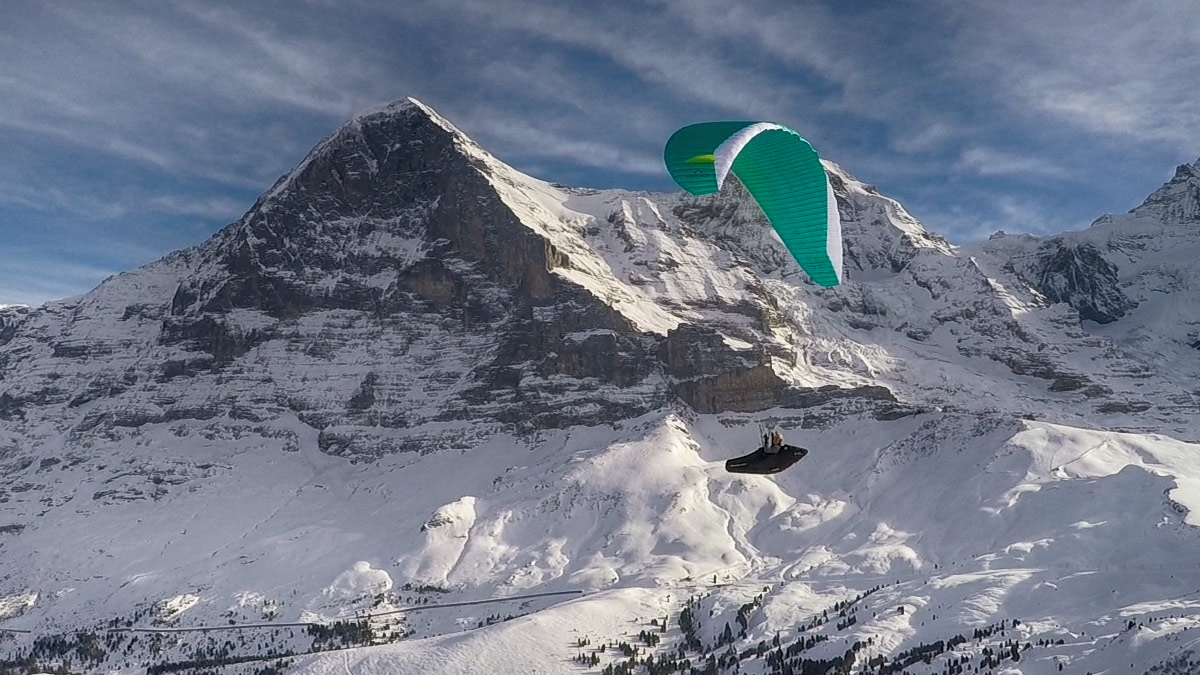
Almost three years ago, Advance entered the ‘high B’ class for the first time with the IOTA. This proved to be a popular wing, providing performance, stability and good handling to pilots wanting to extend their cross country achievements.
With the recent releases in the XC class, the Advance design team had to raise the game. Using the original IOTA as the reference, what could be improved upon? Pitching back on entering thermals (you got a delay before being able to hook into narrow cores), stability on speedbar (full bar was a slightly tentative proposition in rough air), and all round performance (can we ever have enough?).
I went to Advance’s headquarters in Switzerland to test the results of all their research and testing: the new IOTA 2.
IOTA 2 construction
In the hand, it feels robust, despite the light overall weight (same as the predecessor at 4.85 kg for the 25). The wing loading is slightly lower, due to the reduced arc on the wing producing a larger projected surface area. So you can expect climb performance may have increased. With the introduction of a new small size in the range, more pilots can find the ideal size with the seamless weight ranges provide a clear indication of which wing to buy (no more confusing overlaps).
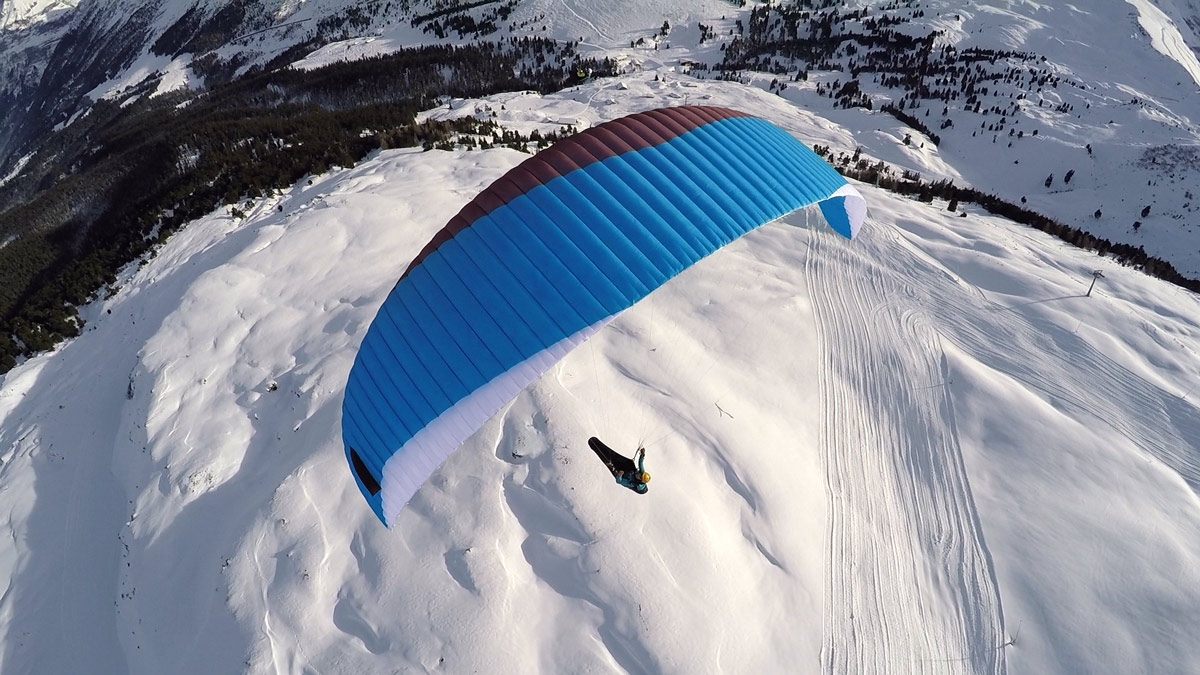
There are some obvious performance enhancements: the IOTA 2 uses 5% less line metres; mini ribs along the trailing edge keep the profile clean; C wires help to maintain the profile shape; complex shaping around the leading edge. Not so obvious is the attention that has been paid to the profile itself (more sharky, more SIGMA 10) and wing tensioning. Advance claim this has produced “Especially good pitch behaviour and directional stability which makes the IOTA 2 very comfortable in turbulence while maintaining its high performance.”
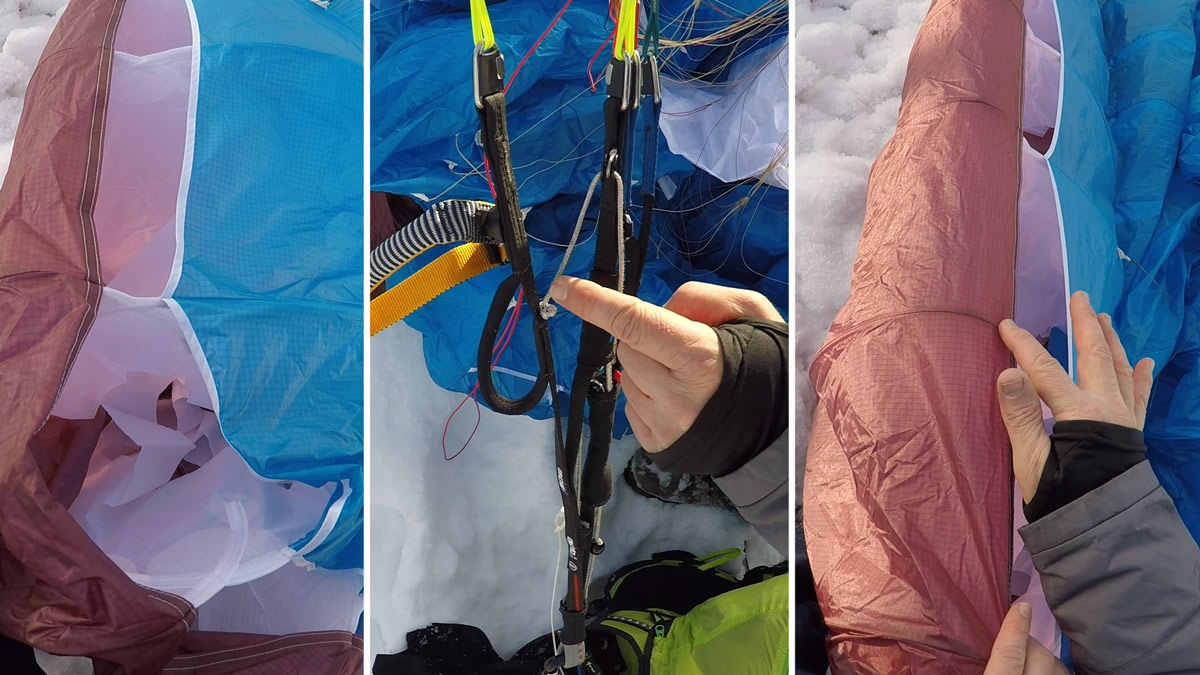
The risers have a luxury feel about them, with neoprene covering the pulleys, strong magnetic keepers and branded plastic inserts that prevent maillon slippage. The tip lines are now on the B riser (hooray), meaning that C riser control in strong winds is no longer compromised.
Rear riser control for accelerated flying is now provided with a simple linkage system which you can easily disable. It’s the cleanest implementation I have seen of this concept on a riser set, with a single braided line passing through a ceramic ring and secured by a looped knot. It is very effective in flight, producing a complete deceleration to standard trim with a short pull and minimal wing deformation.
IOTA 2 Launching
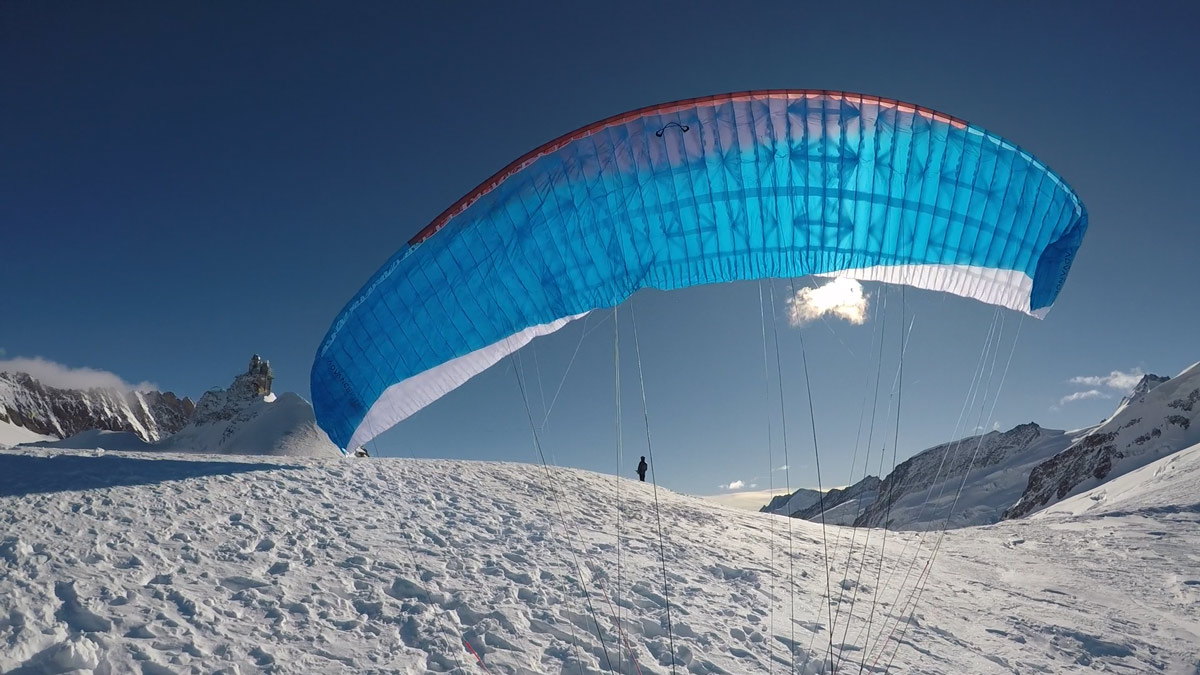
My first launch was from a short shelf in the snow at 2450m with a light backwind. It performed impeccably; despite further testing showing that the wing comes up in a more measured and sedate fashion than the IOTA. I expect it will produce less punch in strong wind. ‘No hands launching’ is still possible. It’s an easy wing to use on your adventurous ‘off-piste’ launches, but some care needs to be taken of the leading edge – no dragging about on the rocks please!
Handling
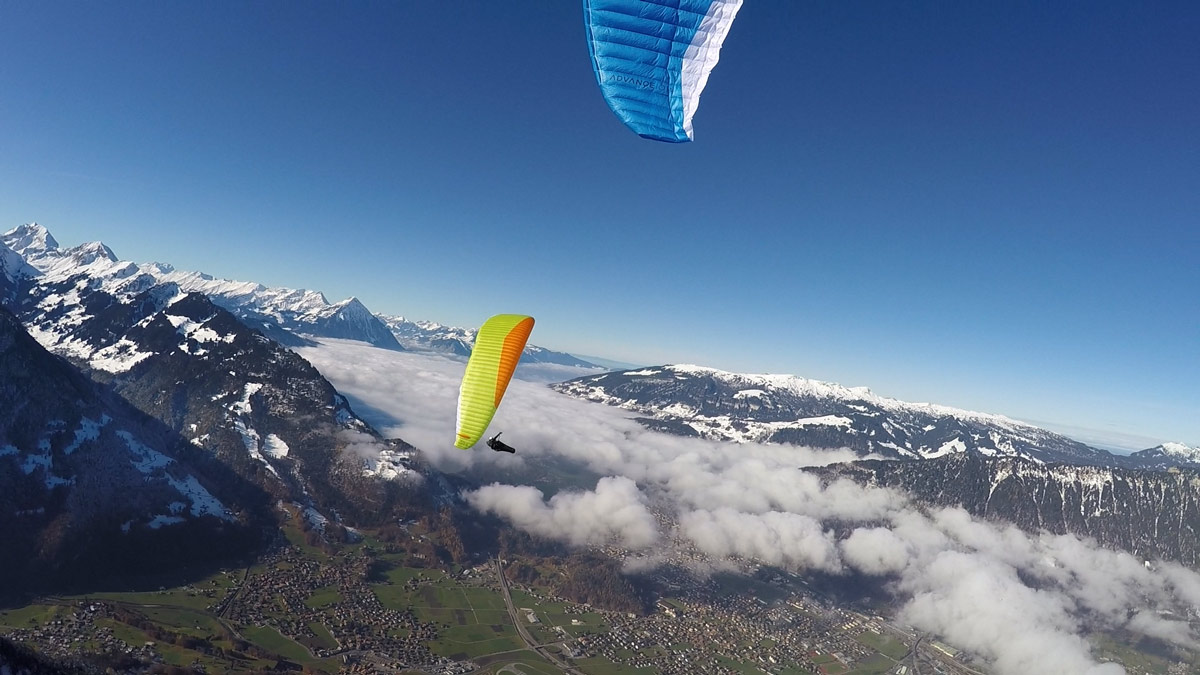
The brake has a more direct feel, taking at 15cm or so. The first bit of travel has a marked effect in airspeed, so you won’t need to pull deeply on the brakes for thermal flying and directional control. This makes thermaling a pleasure, because your hands will remain comfortably high. At the same time, the travel to stall point has increased, so it’s very unlikely that you will spin or stall this wing by accident because you’d need to have your brake toggle stuffed somewhere below your hips.
Although slightly firmer, the wing reminded me instantly of the IOTA, with an agile, playful feel … up to a point. When banked over too hard, you find yourself up against a protective resistance. It feels like leaning against the safety net on a trampoline, and it’s a feature that Advance designers are proud to incorporate in all their wings. For pilots who want whip-sharp reactions it can be a frustration, but on the IOTA 2 it feels about perfect: you have freedom to play, but a safety net if you push too hard or the air turns ugly.
Descent
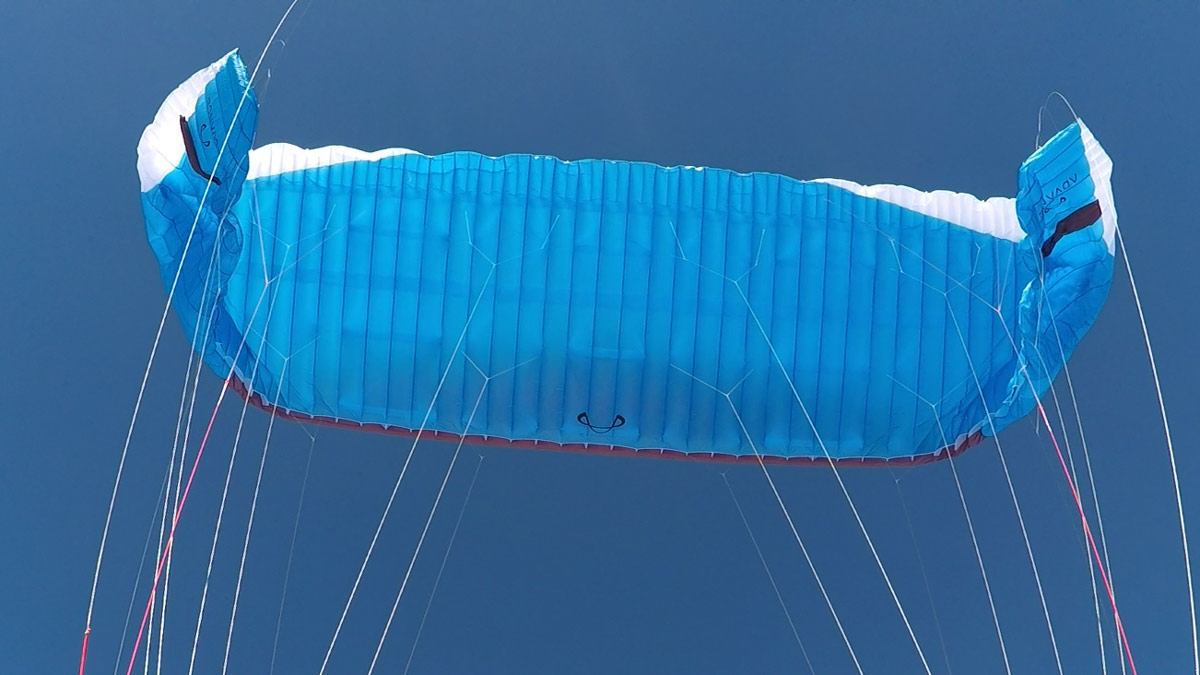
Big ears are easy to apply with the split risers, giving a moderate descent with high forward speed due to the wingtips deflating completely (as opposed to big flappy tips that hold air in them and slow a wing down). After a while the IOTA 2's tips begin to shake (like empty shopping bags on a fence), but the wing remains stable. If you prefer, you can use the B3 technique instead to produce a clean descent with instant reinflation.
Spirals were easy to induce with a steady progressive control available to manage the sink rate and rotational speed. I again noticed the benefit of the balanced turning behaviour here. On the exit, the energy conversion was noticeably smooth, without an overly sharp climbout … the wing retained its speed well.
Flying fast
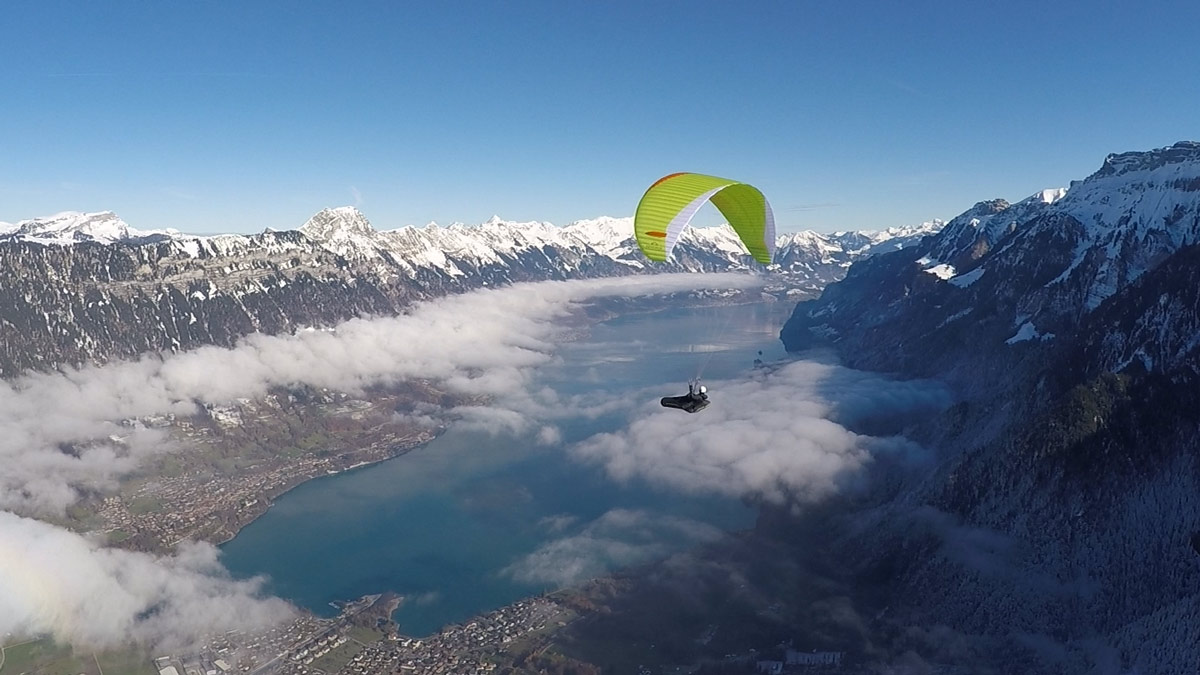
Stable accelerated flying is one of the design objectives, and Advance have succeeded in producing a wing that is completely comfortable on full bar. Gliding from the Jungfraujoch (3466m), I had some altitude to spare, so I glided for ten minutes at top speed. Even when I shook the risers violently from side to side, the wing continued, unaffected. The IOTA 2 could be accelerated more … the travel is surely limited due to certification, resulting in a top speed that is competitive within the XC class yet very easy to manage.
The glide is noticeably good at full speed, and although it isn’t as impressive as the trim speed glide it doesn’t degrade by much, so for getting the most out of a cross country day it’s important you use the speedbar.
So what do I think of the IOTA 2?
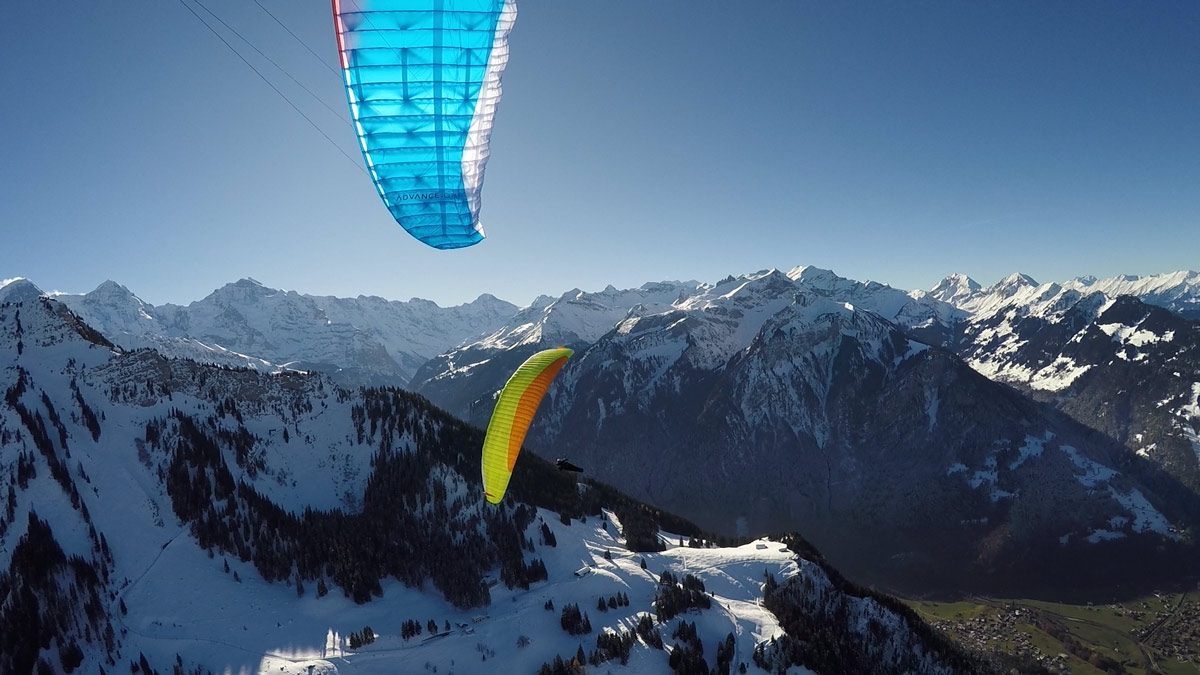
The Advance IOTA 2 is a refined and improved version of what was already an outstanding wing for cross country aspirants. It has a sophisticated feel in the air, the construction is impeccable and up close it appears to have a sleek modern profile. I expect this will become the benchmark wing for performance comparisons in this class, but I’d be happy to buy it on the strength of my short test flights in the Alps, where its balanced handling made high-altitude conditions feel easy. The leading edge feels more unified and resilient, the brakes are more direct and the full bar feeling is one of relaxed confidence.
Advance IOTA 2 first flights review video
Greg Hamerton shares his first impressions after flying at altitude in Switzerland, amongst the highest peaks in Europe!
Want to see more? There’s no better way to support our efforts than buying from us. We’ll ensure you get great service! Choose from our great range AND enable us to produce more videos and articles to benefit the freeflight community.

